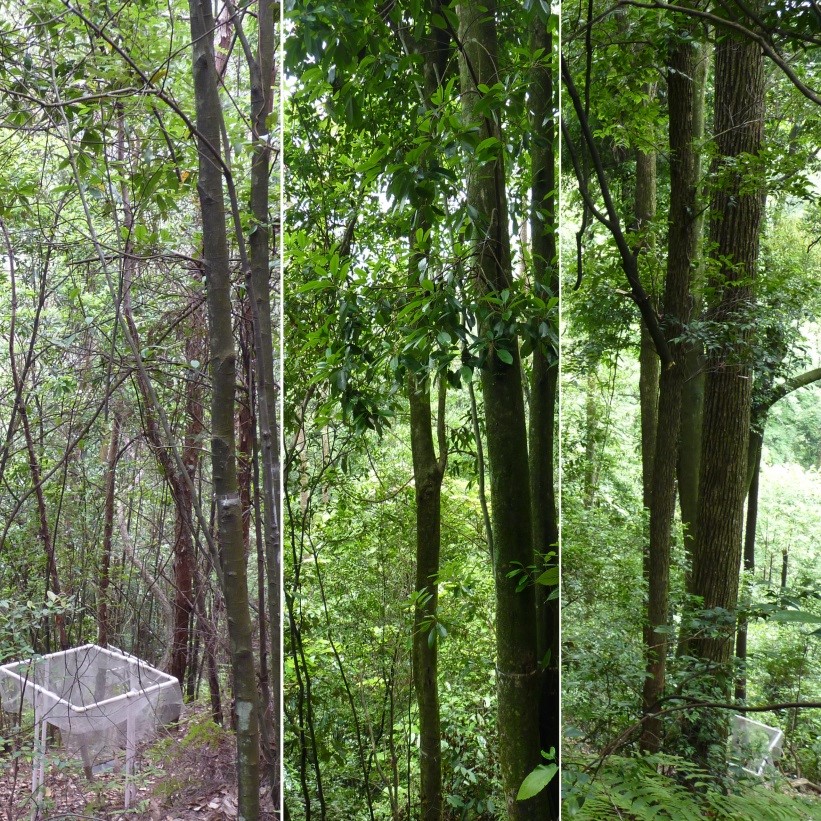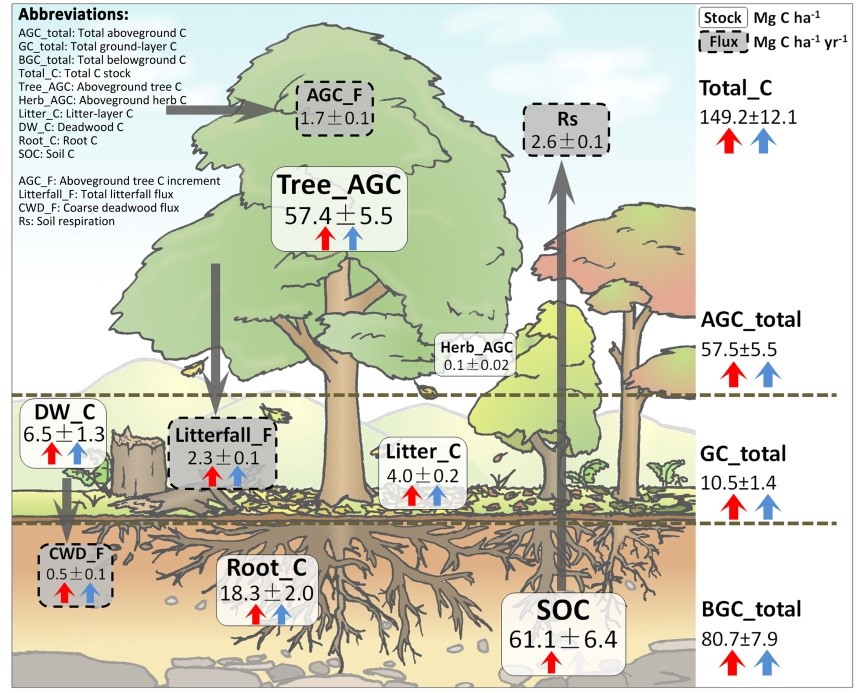Forest ecosystems are an integral component of the global carbon cycle as they take up and release large amounts of C in short time (C flux) or accumulate it over longer time (C stock).
However, there remains uncertainty about whether and in which direction C fluxes and in particular C stocks may differ between forests of high vs. low species richness, especially for subtropical forests in China, although they are a major potential C sink.
Answering this question is relevant because large afforestation programs have been implemented in China over the past 36 years, yet these have focused on monoculture plantations so far.
Now, as reported in a new publication in the Proceedings of the Royal Society B on Aug. 22, a large international team led by the Institute of Botany, Chinese Academy of Sciences, has assembled a comprehensive dataset from field-based measurements over 6 years in 27 forest plots ranging from low to high species richness in Zhejiang province, China.
The researchers from China, Germany and Switzerland found that compared with species-poor stands, species-rich stands had faster carbon cycling but also stored more carbon in above- and belowground ecosystem compartments including stems, roots, litter, deadwood and soil.
These results imply that across China additional carbon worth 300 million Dollars per year could have been fixed from the atmosphere — thereby increasing contributions to combat global warming — if multi-species instead of monoculture planting would have been used in afforestation projects. A change in planting strategies would simultaneously contribute to preserving forest biodiversity.

Forest stands of low, medium and high species richness in the study area

Benchmarking map of carbon stocks and fluxes averaged across all 27 forest stands
ArticleLink:http://rspb.royalsocietypublishing.org/content/285/1885/20181240
CONTAC INFO:
Institute of Botany, Chinese Academy of Sciences,
20 Nanxincun, Xiangshan, Beijing 100093, China
E-mail: Int_office@ibcas.ac.cn
Forest ecosystems are an integral component of the global carbon cycle as they take up and release large amounts of C in short time (C flux) or accumulate it over longer time (C stock).
However, there remains uncertainty about whether and in which direction C fluxes and in particular C stocks may differ between forests of high vs. low species richness, especially for subtropical forests in China, although they are a major potential C sink.
Answering this question is relevant because large afforestation programs have been implemented in China over the past 36 years, yet these have focused on monoculture plantations so far.
Now, as reported in a new publication in the Proceedings of the Royal Society B on Aug. 22, a large international team led by the Institute of Botany, Chinese Academy of Sciences, has assembled a comprehensive dataset from field-based measurements over 6 years in 27 forest plots ranging from low to high species richness in Zhejiang province, China.
The researchers from China, Germany and Switzerland found that compared with species-poor stands, species-rich stands had faster carbon cycling but also stored more carbon in above- and belowground ecosystem compartments including stems, roots, litter, deadwood and soil.
These results imply that across China additional carbon worth 300 million Dollars per year could have been fixed from the atmosphere — thereby increasing contributions to combat global warming — if multi-species instead of monoculture planting would have been used in afforestation projects. A change in planting strategies would simultaneously contribute to preserving forest biodiversity.

Forest stands of low, medium and high species richness in the study area

Benchmarking map of carbon stocks and fluxes averaged across all 27 forest stands
ArticleLink:http://rspb.royalsocietypublishing.org/content/285/1885/20181240
CONTAC INFO:
Institute of Botany, Chinese Academy of Sciences,
20 Nanxincun, Xiangshan, Beijing 100093, China
E-mail: Int_office@ibcas.ac.cn
